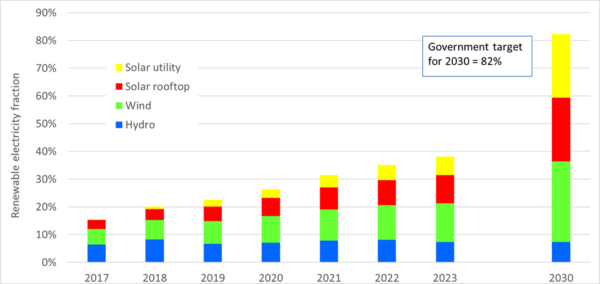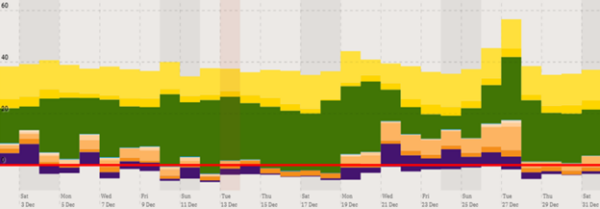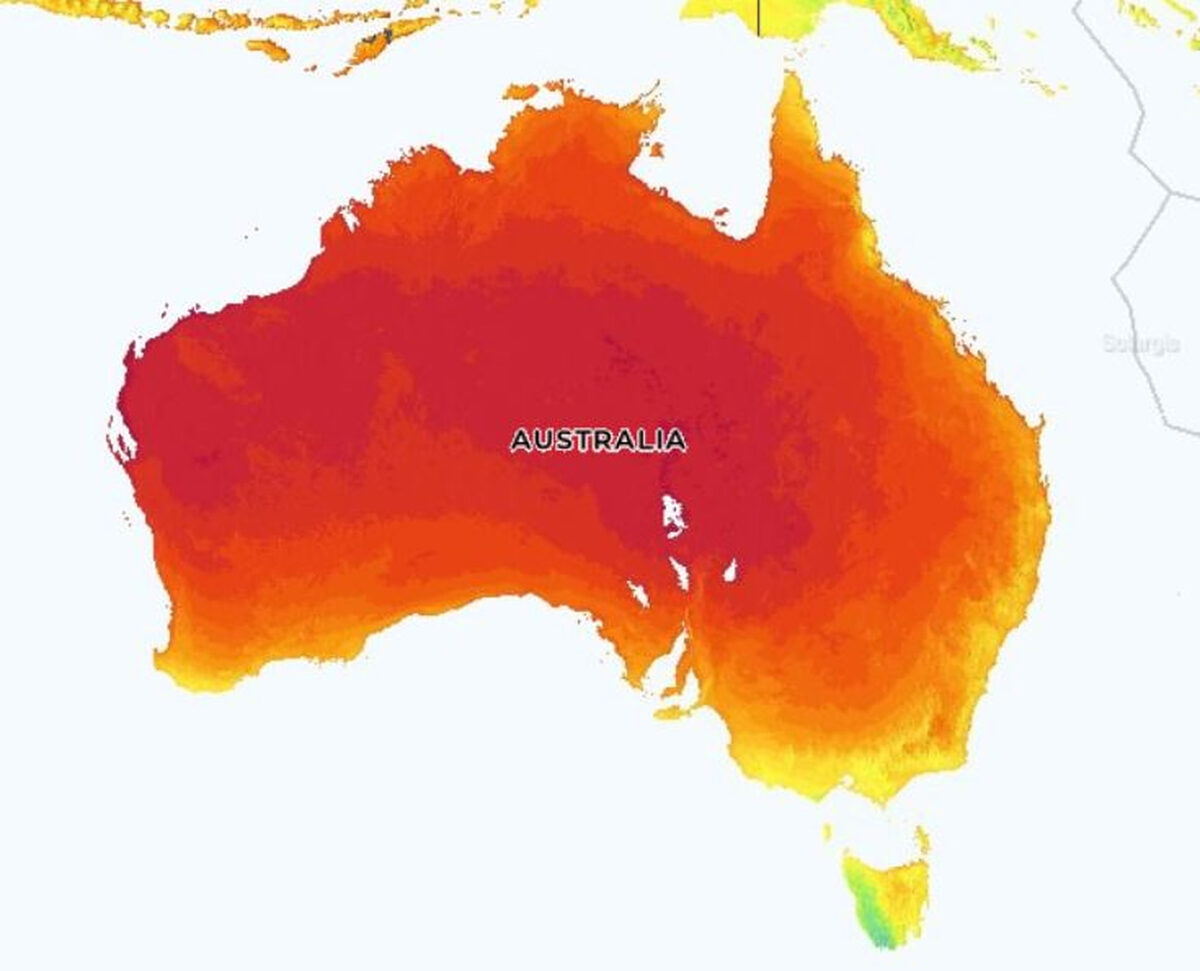Unlike European countries, Australia is physically isolated from its neighbors and cannot share electricity across national boundaries. It is successfully coping alone with rapidly increasing levels of solar and wind and is finding it to be remarkably straightforward and cheap.
For northern latitudes, there is excellent wind (mostly offshore). Densely populated regions such as Japan and Indonesia have enormous offshore wind and solar resources respectively. Europe will benefit from terawatt-scale transmission interconnection to carry offshore wind from the North Sea to the south, and southern winter solar to the north.
Solar and wind
Currently, Australia procures 38% of the electricity in its National Electricity Market from renewables, mostly from solar and wind. The government target is 82% renewable electricity by 2030 (Figure 3). Australia is finding the task of managing high levels of solar and wind to be easier and less expensive than many people anticipated.

Figure 3: Renewable electricity generation in Australia’s National Electricity Market, including indicative generation to meet the government’s 2030 target. Source: CER
The state of South Australia (population 1.7 million) is tracking toward 100% solar and wind in 2027 on an annual basis (Figure 3). South Australia is relatively weakly connected to other states. Additional gigawatt-scale transmission is under construction, which will allow South Australia to export substantial amounts of solar and wind electricity to the eastern states.

Figure 3: Rising levels of solar and wind in South Australia. Source: OpenNEM
The solar and wind fraction for the month of December 2022 was 85% (Figure 4), with an average price on the spot market of AUD 55 ($37)/MWh. The South Australian grid is highly stable and generally delivers lower electricity prices than other states. South Australia provides compelling evidence that solar photovoltaics and wind is cheaper than fossil gas generation.

Figure 4: Daily generation shares in South Australia for December 2022. Yellow is solar, green is wind, orange is gas, and purple is exports and imports. The horizontal red line refers to zero net generation. Source: OpenNEM
Finding solutions
Australia does not have any nuclear or geothermal generation and low capacity for hydroelectricity (about 6% of annual generation). Virtually all new generation capacity in Australia is solar and wind.
Energy storage is a solved problem. Australia has three existing pumped hydro energy storage systems. Two new systems are under construction (Snowy 2.0 and Kidston) that have more energy storage than all the utility batteries in the world put together.
Australia (population 26 million) has about 15 GW of pumped hydro that has been announced by the governments of Queensland, New South Wales, Victoria, and Tasmania, with about 700 GWh of combined storage. None involve new dams on rivers. Multi-gigawatt-scale investment in batteries and thousands of additional kilometres of gigawatt-scale transmission is in progress.
Australia is demonstrating straightforward solutions to variability of solar and wind and offers an economically compelling model for rapid removal of fossil fuels from electricity generation.
Solar and wind comprise three-quarters of new global generation capacity (Figure 5). This is compelling market-based evidence that they are the cheapest method of electricity generation. Coupled with the “electrification of everything,” they can do the heavy lifting to reach zero emissions before mid-century. Balancing techniques are off the shelf, comprising storage, transmission and demand management.

Figure 5: Net new global generation capacity over 2018-2022. Sources: Multiple
Authors: Prof. Andrew Blakers /ANU) and Prof. Ricardo Rüther (UFSC)
Andrew.blakers@anu.edu.au and rruther@gmail.com
ISES, the International Solar Energy Society is a UN-accredited membership NGO that was founded in 1954. It is working toward a world with 100% renewable energy for all, used efficiently and wisely.
The views and opinions expressed in this article are the author’s own, and do not necessarily reflect those held by pv magazine.
This content is protected by copyright and may not be reused. If you want to cooperate with us and would like to reuse some of our content, please contact: editors@pv-magazine.com.



Article should have mentioned that when the sun doesn’t shine and the wind doesn’t blow in South Australia the interstate connector is critical for electric power supply from Eastern states coal powered stations.